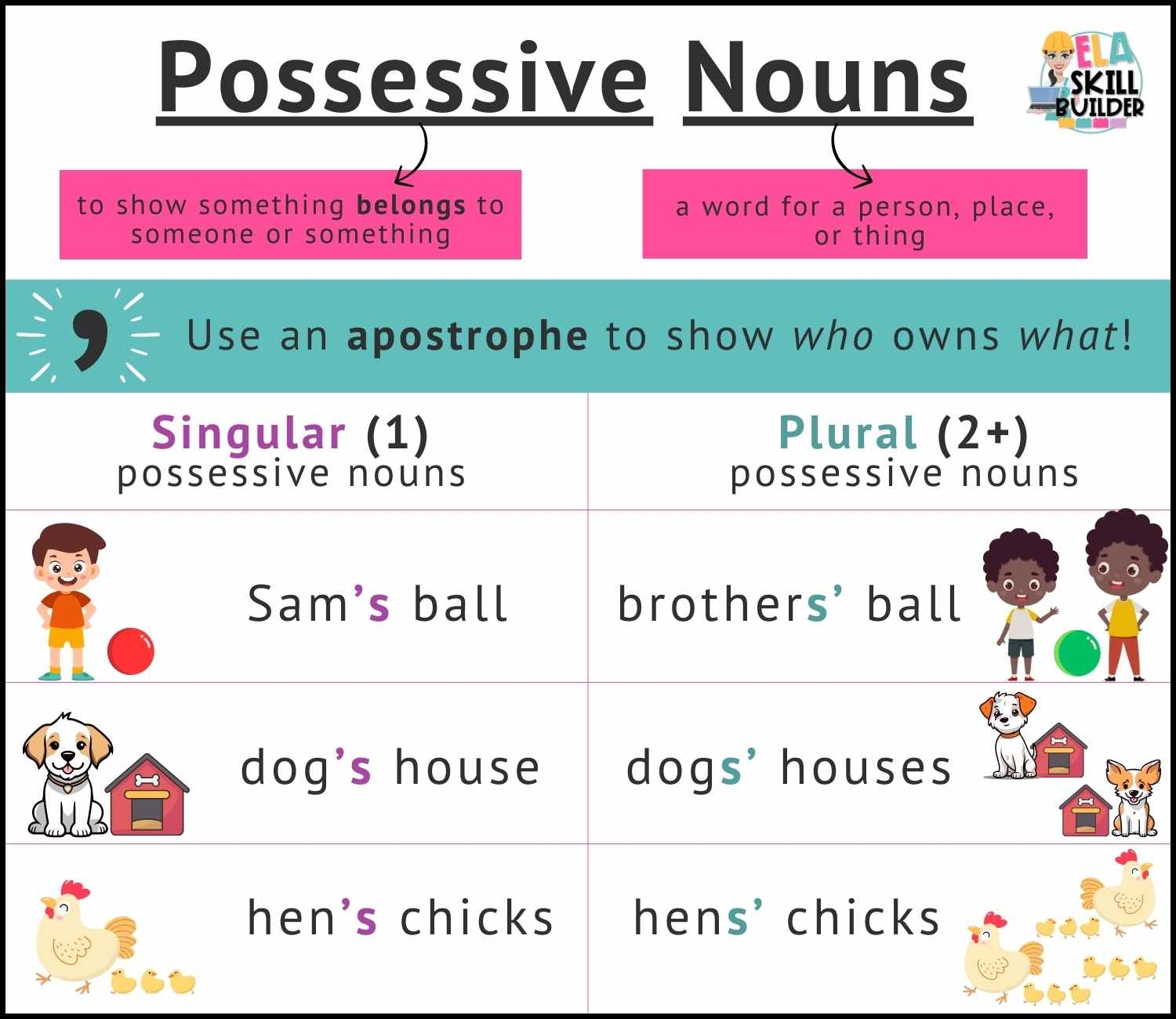Plural and possessive nouns are essential components of the English language. Understanding how to correctly form and use these types of nouns can greatly improve your writing and communication skills. In this article, we will explore the differences between plural and possessive nouns and provide examples to help you master their usage.
Plural nouns refer to more than one person, place, thing, or idea. They are formed by adding -s, -es, or -ies to the end of a singular noun. For example, “dog” becomes “dogs,” “child” becomes “children,” and “box” becomes “boxes.” Plural nouns are used to indicate that there is more than one of something.
Plural Nouns and Possessive Nouns
Possessive nouns, on the other hand, show ownership or possession. They are formed by adding an apostrophe and an -s to the end of a singular noun, or just an apostrophe to the end of a plural noun. For example, “the dog’s bone” shows that the bone belongs to the dog, while “the dogs’ bones” indicates that the bones belong to multiple dogs.
It’s important to remember that possessive nouns can also be used to show relationships between people or things. For example, “John’s car” indicates that the car belongs to John, while “the company’s success” shows that the success belongs to the company. Possessive nouns help clarify who or what possesses something in a sentence.
When using plural possessive nouns, it’s crucial to place the apostrophe after the -s. For example, “the students’ books” shows that the books belong to multiple students. Similarly, “the cats’ toys” indicates that the toys belong to more than one cat. Placing the apostrophe correctly helps avoid confusion and ensures clear communication.
In conclusion, mastering the use of plural and possessive nouns is essential for effective communication in writing and speaking. Understanding how to form and use these types of nouns correctly can enhance your language skills and make your writing more precise and clear. Practice using plural and possessive nouns in your everyday speech and writing to become more proficient in their usage.
